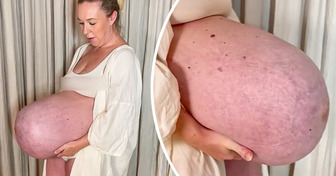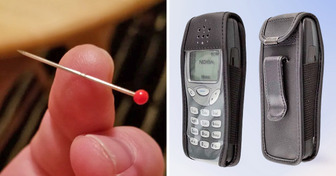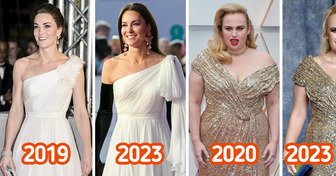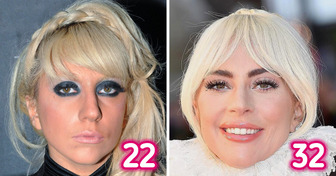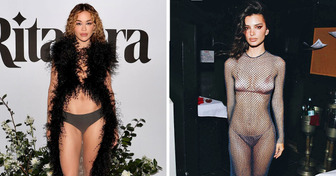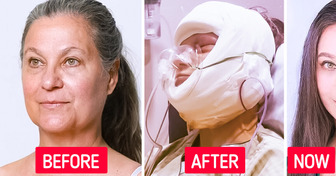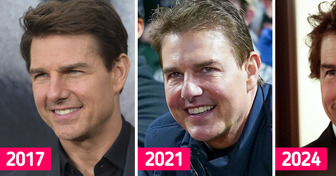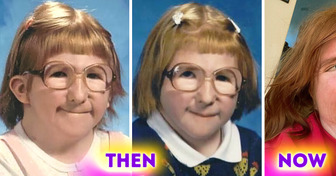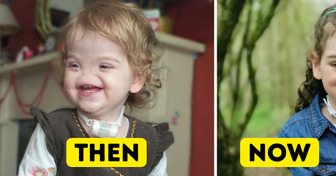15 Funny Pictures That Are Guaranteed to Put You in a Good Mood in no Time

Beauty standards can vary based on different parts of the world. However, according to research, many of the western standards are somewhat universally accepted.
For centuries, both men and women were subjected to following certain rules in order to join society. Now I’ve Seen Everything wants to take a walk down history lane and check some beauty standards and practices from around the world. Some of these practices and standards are still being followed, but it doesn’t always mean that they are not painful or unpleasant.
Long necks are symbolic of females in the Kayan tribe. There are different roots to this tradition, and many believe that in the early days it protected women from slavery. However, some people say that with their long necks the women resemble dragons, which are important figures in the local folklore.
Girls start wearing brass coils when they are 5 years old and get more and more rings that elongate their necks as time goes on.
At the end of the fourteenth century, Queen Isabeau of Bavaria, according to historians, set the trend for high foreheads and long, thin necks. In order to follow the beauty standards, women would shave the hair on their foreheads, the backs of their heads, and would even remove their eyebrows. The eyelashes suffered too: sometimes they were completely removed for the sake of beauty, not only from the top lid but from the lower lid as well.
Traces of blackened teeth can be seen on bones buried in Japan during the Kofun period (250 to 538 A.D.), between the 3rd and 6th centuries. Throughout history, this practice, called ohaguro in Japan, had a number of different meanings depending on the time and place that it was used. For example, in some cases, it was meant to show that a woman had come of age, in some others, to indicate that she was married or to symbolize fidelity. It was also believed to be a way of preventing tooth decay. While a few historians claim that teeth painting was a way to make married ladies look unattractive, there are many scholars that disagree with this theory.
The ink or dye, called kanemizu, was prepared with iron filings diluted in vinegar, to which powdered gall or tea was added. In the late 19th century, the Japanese government banned the practice of ohaguro, and today it is only used in plays, movies, and some traditional events. However, this tradition remains popular and is still practiced in some parts of Asia, including India, and also in Oceania.
A huge rise in beauty products started in the 17th and 18th centuries. During this time, everyone used makeup: women, men, and even children. White soft skin was the symbol of being an aristocrat, the symbol of beauty. To achieve this effect, trendy people used different creams.
Very often they contained potentially dangerous chemicals. They were also made out of innocuous things like ground chalk, powder, egg whites, and vinegar. Such a mix made the skin look soft and shiny. The only problem was that they weren’t supposed to smile or laugh otherwise their face would crack.
Due to the huge popularity of rhinoplasty, Iran has been dubbed the “nose job capital of the world.” The explanation behind this is that females mostly cover their bodies and heads and that is why they are passionate about their facial beauty.
The nasal tape after surgery even has a special name: “bandage of honor.” Women don’t try to hide it, but instead they proudly show it off as a sign of their recent rhinoplasty. Some of them continue wearing bandages long after their surgeries as a symbol of wealth to show that they can afford this kind of operation.
In China, long nails were on-trend for several centuries and the reason was quite unusual: such nails were a sign that the owner didn’t have to do anything with their hands because they could afford to pay for servants.
During the Qing Dynasty that ruled the country for almost 3 centuries (before the beginning of the twentieth century), this trend was at its peak. It wasn’t very comfortable, which is why they only had such long nails on the ring and pinky fingers. In order to avoid breaking them, they would wear special “cases” made of precious metals.
In the French court of the 18th century there was a time when, in order to look elegant, girls had to wear monumental wigs. They would have them decorated with all kinds of flowers, jewels, ribbons, and even stuffed birds. This was the idea of beauty that time. The image of the Princesse de Lamballe (above), friend and confidant of Queen consort Marie Antoinette, shows us a good example of what that trend looked like.
These wigs were the masterpieces of skilled professionals who attached the fake hair to the real hair using animal lard. Since women used to spend a lot of time with their wigs on, it was common for them to attract rats and other animals, especially while they were sleeping. Hence the origin of the expression “your hair looks like a rat’s nest.”
4 centuries ago, dark eyebrows shaped like perfect half-moons were trendy. In the center, they were a bit wider and they got thinner closer to the edges. To make the color richer, the eyebrows were dyed with coal, elderberry juice, and soot from oil lamps. The extra hairs were plucked. Some women shaved their eyebrows off completely and drew them on their faces to be considered a beauty. They also used fur to make fake eyebrows, but they often fell off.
The prototypes of the corsets used to make waists look thinner appeared in the Bronze Age. But Europeans started using them in either the fifteenth or sixteenth century, according to different experts.
The peak of the trend was during the reign of Catherine de’ Medici: during this period, the corsets could cut up to 10 inches off your waist, which turned you into a beauty but had a terrible effect on the internal organs, affecting how they functioned along with the blood flow in general. Wearing corsets regularly and over long periods of time could even cause the ribcage to become deformed.
Tying and tightening: 2 fundamental conditions for the women of yesteryear to feel beautiful and elegant when wearing a skirt. That might be why the hobble skirt was a fashion trend that prevailed between 1908 and 1914. These skirts looked like a sort of tube at the bottom and forced women to have to take very short steps in order to be able to walk. That might actually be where their name comes from.
French designer Paul Poiret claimed to have created this strange fashion trend. He even claimed to have been the one who made it popular in the United States. In New York and Los Angeles, for example, streetcars were adapted so that women could hop on wearing those “baby step skirts.” In the postcard above, a man can be seen laughing at this garment and making a joke: “It’s a skirt with a speed limit.”
As far as the human face goes, the eyebrows have probably suffered the most when it comes to beauty standards. For example, in Ancient Greece, the so-called unibrow was a fashionable sign of beauty and if a woman didn’t have one, she would use a special “implant” made of goat fur.
But the women of medieval China went even further. In the second and third centuries, they started making multi-colored eyebrows. One of the emperors of that time ordered his wives to have blue-green eyebrows. To follow the order, the women had to shave their eyebrows and draw in new ones using expensive ink that was imported from other countries. It wasn’t just for the emperor’s pleasure but it was also his way of showing other people how wealthy he was because only very rich people could afford this ink.
But this trend didn’t live very long and natural-looking eyebrows became popular again. The shape could vary from long and thin to short and thick.
Having very pale skin was once considered a sign of beauty, and this trend was at its peak in England in the eighteenth century. To make the skin as pale as possible, women used quite unusual methods like dry horse manure, for example. But the most dangerous method was lead which was used for face paint. The biggest amounts of lead were in the red paint that was put on the lips and the cheeks to create contrast. Additionally, women would use blue pencils to draw in veins on their faces to highlight their paleness.
For people in Bali, tooth filling is a traditional ritual. This procedure is mainly done by teenagers in order to ’ward off evil spirits.’ Filed teeth in Indonesia are a sign of maturity. After this procedure teens are ready to marry.
Although the tooth filling process is not that harsh and not as widespread as it used to be, some Balinese people are still doing it even if they live far away from their homeland.
In 2015 Shridhar Chillal from India became the person with the longest fingernails on a single hand ever recognized by Guinness World Records. However, Indian women don’t stop at long fingernails, they also grow long toenails. Unlike world trends, long colored toenails are considered to be popular here.
Asian countries have own visions of beauty. South Korea has the largest number of cosmetic procedures in the world per capita. Face contouring is on the top-3 list of most popular plastic surgeries in South Korea. Despite potential risks, women may undergo cheekbone reduction, V-line, and jaw correction to try to obtain a heart-shaped face.
While people in other parts of the world spend a lot of money on straightening their teeth considering it a sign of beauty, the opposite trend is happening in Japan. Here, women pay to make their teeth snaggled. This tendency is called yaeba or “double tooth.” Dentists make “snaggleteeth” by putting permanent or temporary plastic fronts on upper canines.
These crooked teeth make women look younger and hence having uneven set of teeth is one of beauty standards for many girls in Japan.
What do you think about these practices? Are you pleased that some of them are long gone or do you think that we still are slaves to today’s beauty standards?

